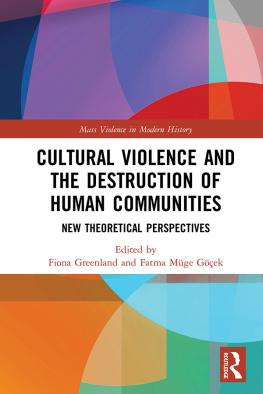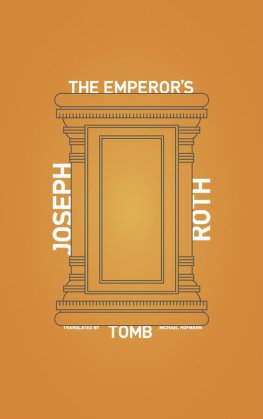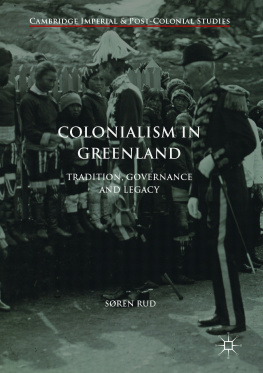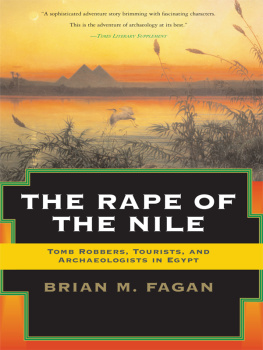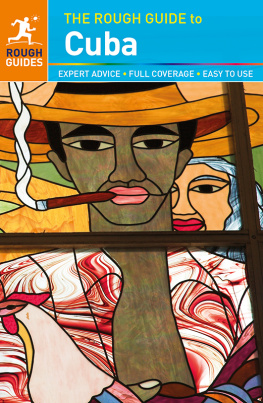Fiona Greenland - Ruling culture : art police, tomb robbers, and the rise of cultural power in Italy
Here you can read online Fiona Greenland - Ruling culture : art police, tomb robbers, and the rise of cultural power in Italy full text of the book (entire story) in english for free. Download pdf and epub, get meaning, cover and reviews about this ebook. year: 2021, genre: Politics. Description of the work, (preface) as well as reviews are available. Best literature library LitArk.com created for fans of good reading and offers a wide selection of genres:
Romance novel
Science fiction
Adventure
Detective
Science
History
Home and family
Prose
Art
Politics
Computer
Non-fiction
Religion
Business
Children
Humor
Choose a favorite category and find really read worthwhile books. Enjoy immersion in the world of imagination, feel the emotions of the characters or learn something new for yourself, make an fascinating discovery.
- Book:Ruling culture : art police, tomb robbers, and the rise of cultural power in Italy
- Author:
- Genre:
- Year:2021
- Rating:4 / 5
- Favourites:Add to favourites
- Your mark:
- 80
- 1
- 2
- 3
- 4
- 5
Ruling culture : art police, tomb robbers, and the rise of cultural power in Italy: summary, description and annotation
We offer to read an annotation, description, summary or preface (depends on what the author of the book "Ruling culture : art police, tomb robbers, and the rise of cultural power in Italy" wrote himself). If you haven't found the necessary information about the book — write in the comments, we will try to find it.
Fiona Greenland: author's other books
Who wrote Ruling culture : art police, tomb robbers, and the rise of cultural power in Italy? Find out the surname, the name of the author of the book and a list of all author's works by series.
Ruling culture : art police, tomb robbers, and the rise of cultural power in Italy — read online for free the complete book (whole text) full work
Below is the text of the book, divided by pages. System saving the place of the last page read, allows you to conveniently read the book "Ruling culture : art police, tomb robbers, and the rise of cultural power in Italy" online for free, without having to search again every time where you left off. Put a bookmark, and you can go to the page where you finished reading at any time.
Font size:
Interval:
Bookmark:
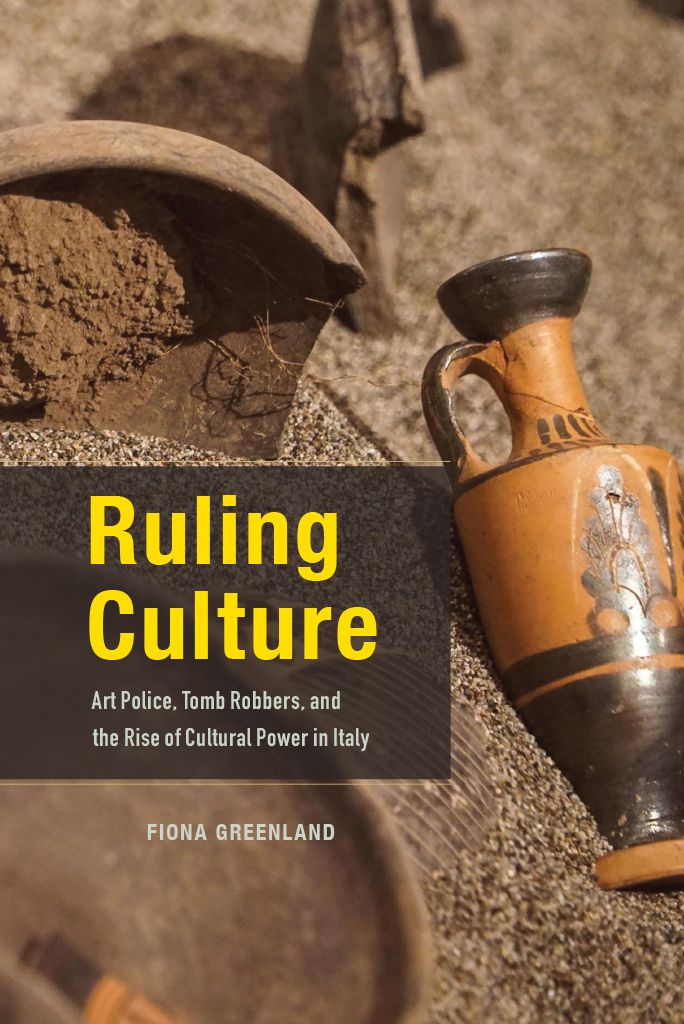
Fiona Greenland
The University of Chicago Press Chicago and London
The University of Chicago Press, Chicago 60637
The University of Chicago Press, Ltd., London
2021 by The University of Chicago
All rights reserved. No part of this book may be used or reproduced in any manner whatsoever without written permission, except in the case of brief quotations in critical articles and reviews. For more information, contact the University of Chicago Press, 1427 E. 60th St., Chicago, IL 60637.
Published 2021
Printed in the United States of America
30 29 28 27 26 25 24 23 22 21 1 2 3 4 5
ISBN-13: 978-0-226-75698-1 (cloth)
ISBN-13: 978-0-226-75703-2 (paper)
ISBN-13: 978-0-226-75717-9 (e-book)
DOI: https://doi.org/10.7208/chicago/9780226757179.001.0001
Library of Congress Cataloging-in-Publication Data
Names: Greenland, Fiona, author.
Title: Ruling culture : art police, tomb robbers, and the rise of cultural power in Italy / Fiona Greenland.
Description: Chicago : University of Chicago Press, 2021. | Includes bibliographical references and index.
Identifiers: LCCN 2020043888 | ISBN 9780226756981 (cloth) | ISBN 9780226757032 (paperback) | ISBN 9780226757179 (ebook)
Subjects: LCSH : Classical antiquities theftsItaly. | Art theftsLaw and legislationItaly. | Cultural propertyItaly. | ItalyAntiquitiesLaw and legislation.
Classification: LCC KKH 3183. G 737 2021 | DDC 364.16/2870945dc23
LC record available at https://lccn.loc.gov/2020043888
 This paper meets the requirements of ANSI / NISO Z39.48-1992 (Permanence of Paper).
This paper meets the requirements of ANSI / NISO Z39.48-1992 (Permanence of Paper).
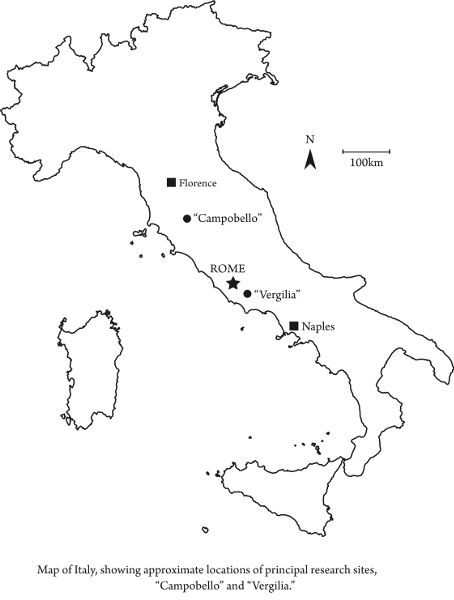
We tend to assume that Italian culture is eternal. As a body of art, architecture, and literatureto say nothing of cuisine, fashion, and filmit shows remarkable quality over many centuries. Its consistent influence should surprise us. Empires fall, territories contract, economic and political poles shift, and artistic styles fade in popularity. Italys cultural heritage, broadly speaking, seems to have transcended all this. It consistently ranks high in international tourism surveys, and today Italy dominates the prestigious UNESCO World Heritage List. Instead of being surprised, we treat its value as inevitable. Studies of heritage despoliation and antiquities theft are numerous, but they tend to confirm that Italys cultural heritage possesses a robust superiority that is natural and effortlesseven providentially ordained as the fortunate outcome of the vicissitudes of civilization and nature.
A vocal critic of this view is also its most significant proponent. The Comando Carabinieri per la Tutela del Patrimonio Culturaleknown colloquially as the Art Squadis an elite military-police unit charged with protecting Italys cultural treasures. Since 1969 the unit has deployed extensive surveillance and law enforcement tactics to eradicate looting and smuggling, and developed a worldwide reputation for its vigorous program of reclaiming purloined artworks and antiquities. The Art Squad and the state actors who preside over it do not take cultural heritage for granted. Affecting a performance of wary appreciation, the Art Squad does not rest on its laurels. While civilians and tourists admire the Colosseum, Renaissance churches, and the thousands of archaeological sites, the Art Squad is doing its part to maintain the countrys cultural power. Its officers insist that this power is grievously imperiled by unscrupulous art collectors and rapacious thieves, chief among them the homegrown tomb robber, or tombarolo. Ironically, the very presence and notoriety of the tombaroli contribute to the units mystique.
Huaqueros and Raubgrber, dao mu zei and nighthawks: many cultures have specific words and phrases to describe people who dig for artifacts illicitly. In Russian-speaking regions, tchorniye arkheologi translates as black archaeologist and includes those digging for ancient relics as well as those using metal detectors to scavenge for jewelry and money from newly buried corpses. The term implies a contrast with white or legal archaeologists. It suggests that there are moral and immoral ways of digging, and that illicit diggers can be thought of as a type of archaeologist even if they lack formal training. The Chinese term dao mu zei makes clear the legal status of those who take tomb pots: zei is a thief, a cheat, and a sneak. Until 2010 the Chinese government executed tomb robbers on grounds that they threatened the intactness of the Chinese people. While the specific resonances of these terms are socially and culturally determined, what links them all is a sense of cunning, deceit, and magic.
Because the tomb robbers treasure is buried in the ground, locating it requires, by definition, an extraordinary capacity for navigationincluding exquisite sense perception of undulations in the landscape and changes in the soil quality, and a penetrating vision into the soil that can be learned only through years of living and digging in a particular field or valley or hilltop. Pietro Casasanta, whom the Wall Street Journal dubbed the Prince of the Tomb Robbers, credited his stunning artifact discoveries to his deep knowledge of the land. Digging in the earth, he says, is an all-encompassing bodily experience. Its like falling in love with a woman, its hopeless (fig. 1). The magic of the tomb robber is never limited to the ability to return from the underworld, however; it is also always aesthetic. Tomb robbers find and transform. They can plunge into the earth and emerge with jewelry, pottery, coins, sculpted jade or ivory, and skulls and bones. For this abilitytaking the possessions of others, alive or deadtomb robbers often stand accused of banditry.
Banditry, however, is in the eye of the beholder. Italian tomb robbers defend their digging and insist that they make little or no money from artifacts. They say they keep what they find or make gifts to family and close friends who will appreciate the objects as reminders of shared history. Money, they will tell you, is not the motivation for digging, and in any case the most substantial profits are said to be going to foreign archaeologists, private collectors, or Ministry of Culture officials. Given the power imbalance, my informants emphasized, why not allow them some leeway in digging on the side and pocketing a few artifacts that they will cherish and preserve? Unauthorized diggers, then, deftly play down financial motives yet insist that someone is making money. The interplay of history, land, and valuewith the suspicion and status it confersstructures the discourse and practice of Italian cultural patrimony. The tombarolo is a persistent feature of the cultural landscape in Italy. There are alternative terms in the Italian language for a person who digs illegally at archaeological sites. A saccheggiatore is a plunderer, and clandestino can refer to a clandestine digger. Both are serviceable phrases and readily comprehensible in context. The cultural trope of the
Next pageFont size:
Interval:
Bookmark:
Similar books «Ruling culture : art police, tomb robbers, and the rise of cultural power in Italy»
Look at similar books to Ruling culture : art police, tomb robbers, and the rise of cultural power in Italy. We have selected literature similar in name and meaning in the hope of providing readers with more options to find new, interesting, not yet read works.
Discussion, reviews of the book Ruling culture : art police, tomb robbers, and the rise of cultural power in Italy and just readers' own opinions. Leave your comments, write what you think about the work, its meaning or the main characters. Specify what exactly you liked and what you didn't like, and why you think so.


